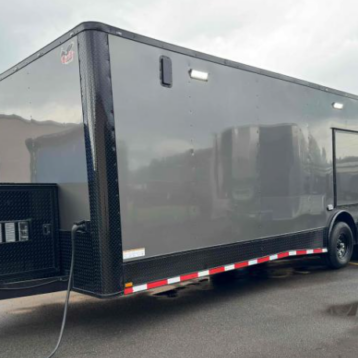Jet engine technology was one of those historical technological breakthroughs that happened in several places at the same time. The most important research and development work was carried out in England and Germany. This column will try and take a look at the way jet technology was developed in parallel in England and in Germany. It will also show the different paths these R&D programs took in both countries and how it influenced their outcome.
 |
| Centrifugal-flow engine diagram |
|
In both countries jet engine started in mostly academic theoretical studies in the 1920s, but individual scientists, working completely independent of each other, performed the practical development in the 1930s. There were two key figures in this story. In England the pioneer was Frank Whittle, a military pilot and an engineer; in Germany it was Hans von Ohain, a young physics student. Both came up with the same design: the centrifugal-flow jet turbine. In this engine a compressor fan compressed air into several combustion cans arranged around it. There the air was mixed with fuel spray, ignited and the hot gases blown to the rear created the engine’s thrust. These gases also propelled a turbine that was connected to the compressor. This design was relatively simple to implement with the technological know-how of the mid 30s, especially because similar design was already used in superchargers that improved the performance of piston engines.
 |
| Frank Whittle (Credit: British Government) |
|
Whittle and his company Power Jets made good progress with the engine, but his work suffered from lack of official or corporate support. In simple modern words, he found no investor for his startup project and on the day WWII broke out, he had only 10 people on his company’s payroll. He continued his work while desperately seeking financing and state support. The stress caused by uncertainty regarding the future of his work took a heavy toll from his health at that time.
Ohain, on the other hand, was introduced in 1936 to
Ernst Heinkel – one of the most important aircraft designers in Germany and a major aircraft producer. Heinkel was highly interested in fast flight and he immediately grasped the potential of the new engine. He hired Ohain and allowed him to continue his work using his big firm’s resources. As a result of this move, other German aero engine manufacturers also started developing jet engines. When war broke out, jet technology development work became relatively widespread in Germany’s aviation industry.
 |
| Axial-flow engine |
|
Heinkel and Ohain made it first easily to the finish line. On August 27, 1939 the first jet propelled aircraft in history – the He 178 – took to the air for the first time.
It was realized however at the same time, that the development potential of the centrifugal-flow engine was limited. The biggest disadvantage of this type of engine was the need for a single large diameter compressor in order to provide enough compressed air into the combustion chambers. In order to increase the thrust of such engine, a larger diameter compressor was required. As a result, centrifugal-flow engines were stubby. It was difficult to fit them into streamlined and aerodynamically efficient fuselages or engine nacelles. Furthermore, indirect flow of air through the engine reduced the efficiency of the centrifugal-flow engine.
Generally, jet engine development was extremely challenging because its operation created very high temperatures and greater rotational speeds then piston engines. Both Whittle and Ohain experienced many failures and accidents while refining their engines. During some of Whittle’s engine first test runs the engine went out of control and disintegrated.
While the He 178 demonstrated the new technology, initial blueprints for axial-flow engines were prepared in the design bureaus of the Jumo (Junkers’ aero engine division) and BMW aero engine manufacturers in Germany. Once again, Germany was not alone in this field. British jet propulsion theoretician
A.A. Griffith suggested such engines in the 20s, and in the late 30s the Metropolitan- Vickers firm started developing a turbo-prop engine (jet engine driving a normal propeller) based on his design. In 1940 the firm gave up the turbo-prop design and started working on a pure jet engine based on the axial-flow design. The new engine, called
F.2, showed a greater potential then Whittle’s design, but suffered from numerous technical problem. Its development was terminated in 1944, but its technology was later used as a basis for the successful postwar Sapphire engine.
Axial-flow engine is constructed around a long axis, with a compressor on one end, and a turbine on the other end. The single combustion chamber is located between them and the hot gases blown rearwards propel the turbine and provide thrust. The most important advantages of the axial-flow design are its relatively small diameter and the ability to add more compressor fans in a row in order to compress a larger mass of air, and therefore increase thrust. Furthermore, the flow of air through the engine is linear – a feature that increases its efficiency.
The biggest problems with this engine at that time were its novelty and need of stronger parts and components due to its higher thrust.
 |
The “fat” engine nacelle of the
centrifugal-flow Wellend engine is
clearly seen on this 616 Squadron
Meteor I (Credit: RAE) |
|
Once again, German designers fared better. The Reich’s Ministry of Aviation fully realized the potential of jet propulsion after the demonstration of the He 178 and ordered massive R&D of jet engines, focusing on the axial-flow design. Due to different reasons, jet engine development moved from Heinkel to BMW and Jumo, who started working on their respective axial-flow designs.
In England, Whittle and his startup finally received some support from the Air Ministry and on May 15, 1941, the first British jet aircraft – the
Gloster E28/39 – finally took to the air. It was powered by the prototype W.1 engine. Whittle then moved on to develop the improved W.2 engine and prepare it for series production. As happened to Ohain, at that point British Air Ministry marginalized Whittle after he made the big breakthrough. Since Power Jets possessed no production facilities, car manufacturer Rover was contracted to perform series production. Slowly but surely Whittle started losing control on his engine. Further development and production of the
W.2 was nationalized and given to other firms, including Rolls Royce (which purchased Rover’s jet engine factory in 1943) and de Havilland.
At this point the British were legging behind in technology, but were ahead in production. They continued developing the more reliable centrifugal-flow design. While Rolls Royce experienced problems with the original W.2 engine – now called Welland – it succeeded in improving it and turning it into its own reliable Derwent. By sticking to proven technology the British were able to start series production of jet engines at about the same time as the Germans. In fact, the first operational jet aircraft squadron in history was the Royal Air Force’s 616 Squadron with Welland powered Gloster Meteor I fighters. It was declared operational on July 12, 1944. The Meteor I was replaced in early 1945 by the Derwent powered Meteor III. The Derwent design was so successful that it remained in service for many years after the end of WWII.
The Germans were legging behind production-wise because they concentrated their efforts on the more advanced axial-flow engine. This engine was more complicated and therefore took longer to develop and make ready for series production. Its production was also difficult because of the special heat-resistant metals it required. The huge technical challenges this type of engine posed are well demonstrated by the fact that centrifugal-flow engines still powered the most modern jet fighters of the Korean War – the F-86 and Mig-15.
Centrifugal-flow engines filled the void until axial-flow technology matured. This ripening process was a long one, and was partially based on German developments, but it was the future of jet propulsion and during the 50s axial-flow engines became the most common type of jet engine.
About the author: Dr. Daniel Uziel researches different aspects of modern German history, military history, and war and media. In recent years he is researching the history of the German aviation industry. He conducted part of this research as a fellow at the US National Air & Space Museum.














